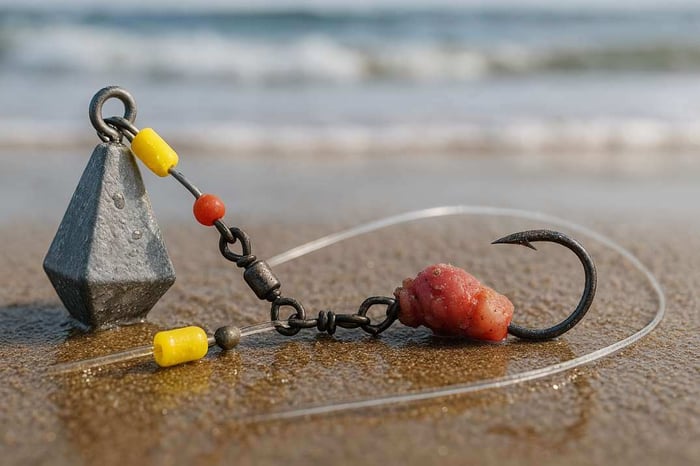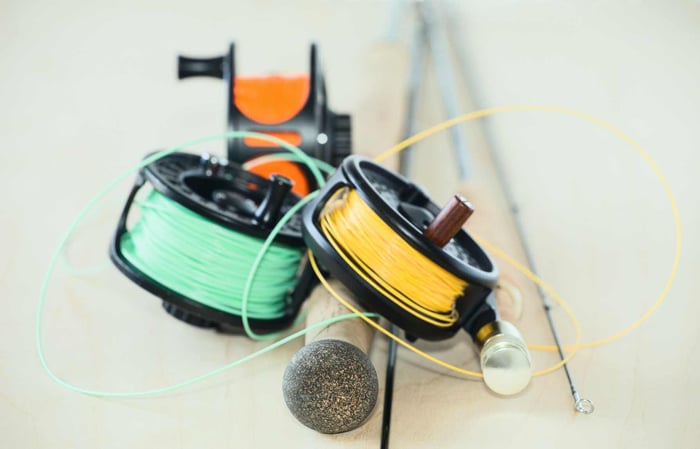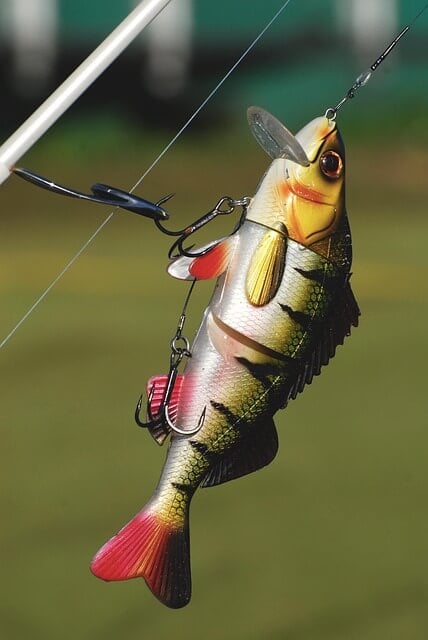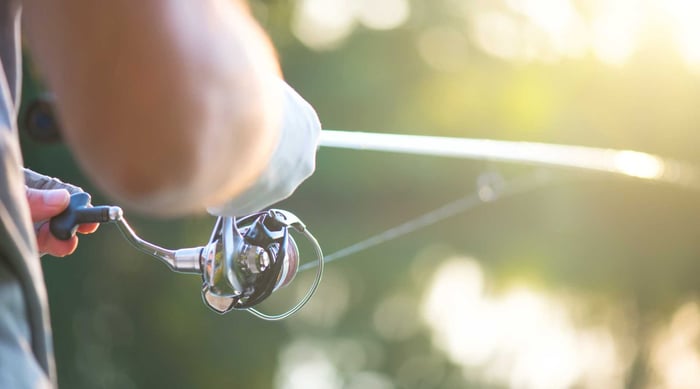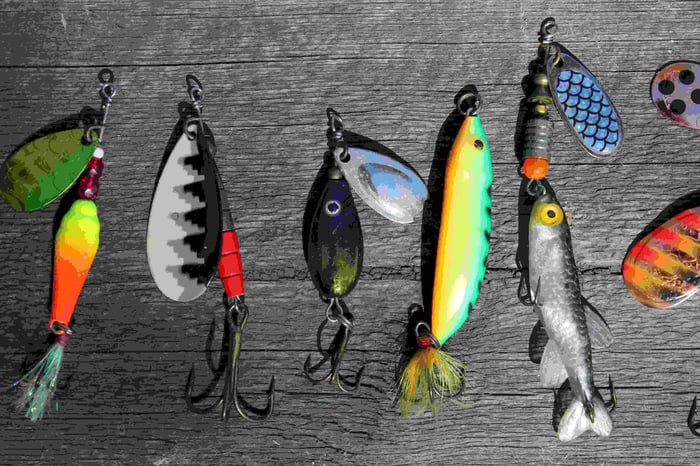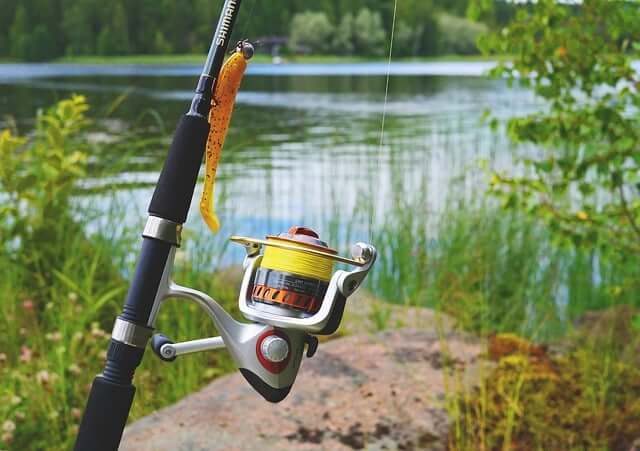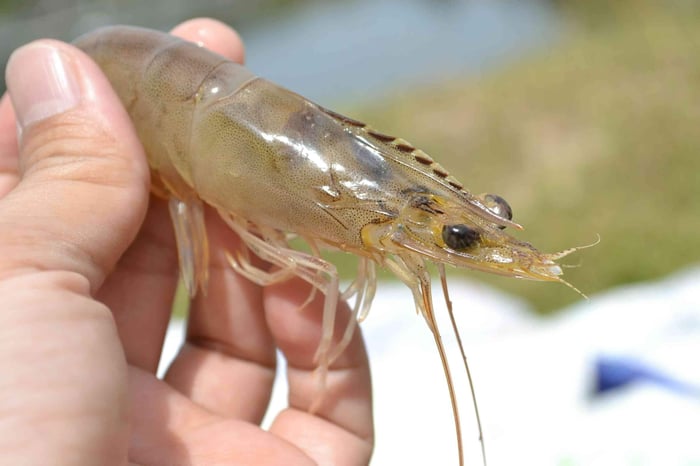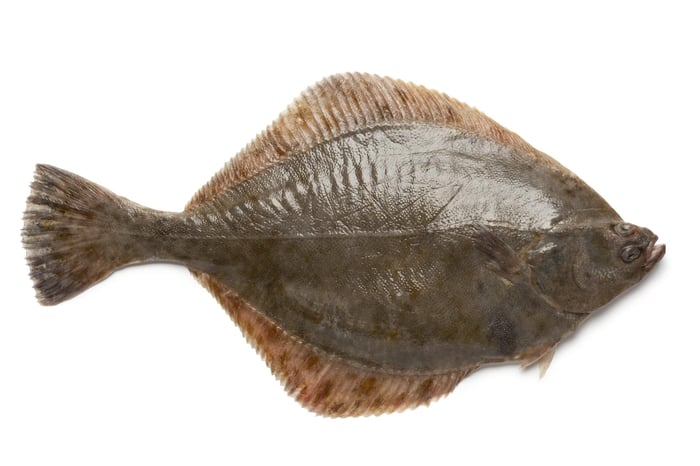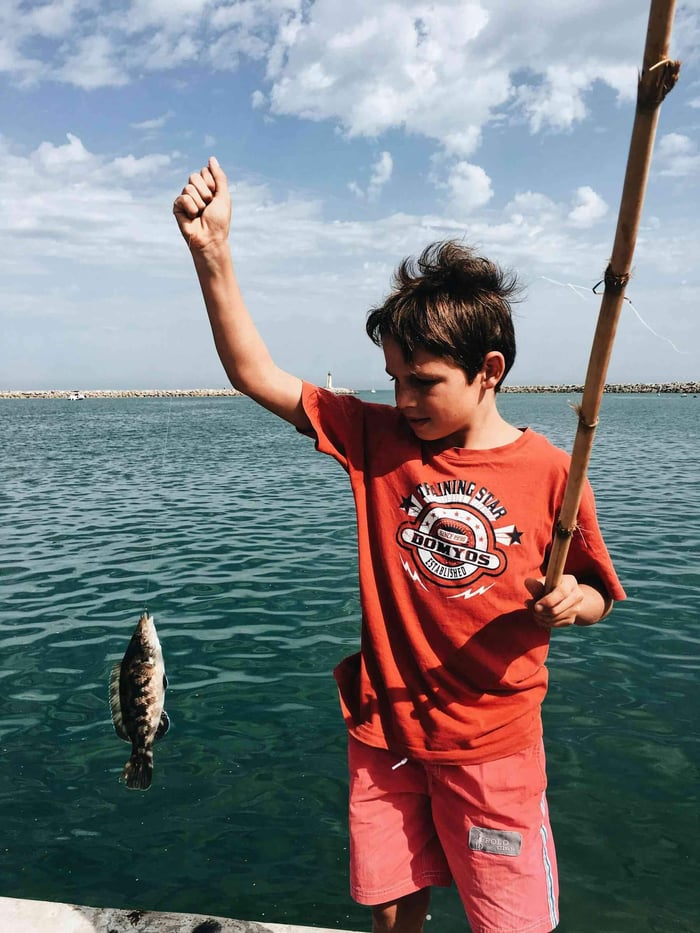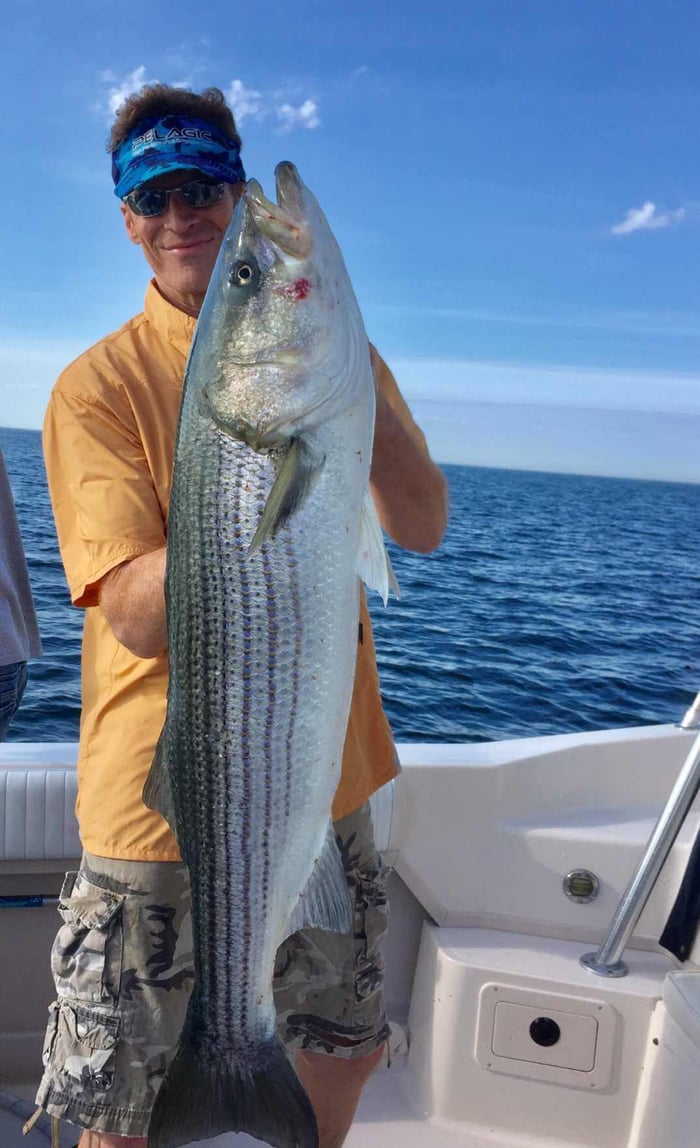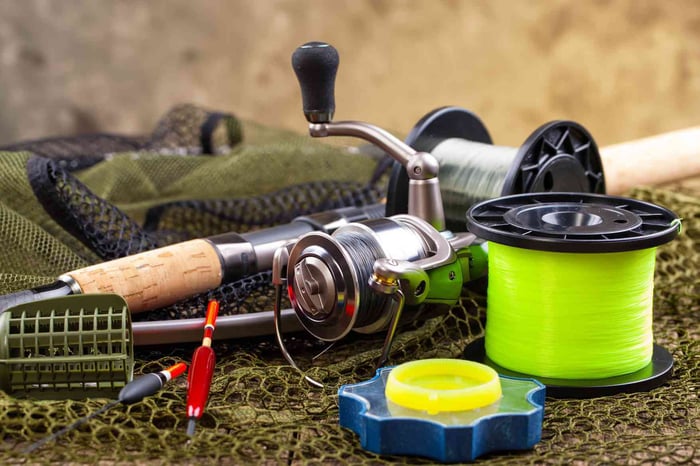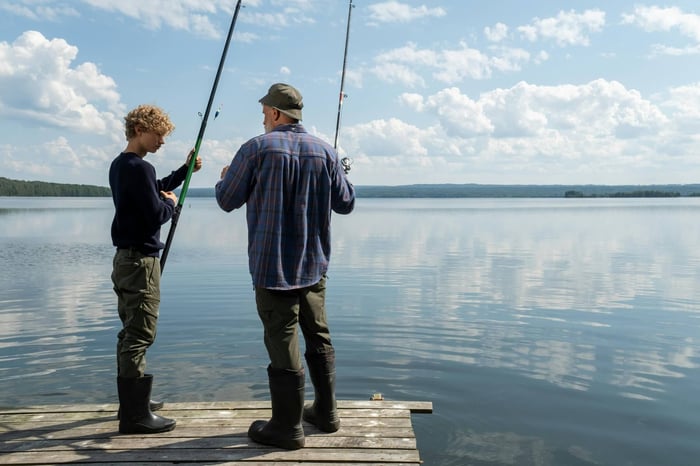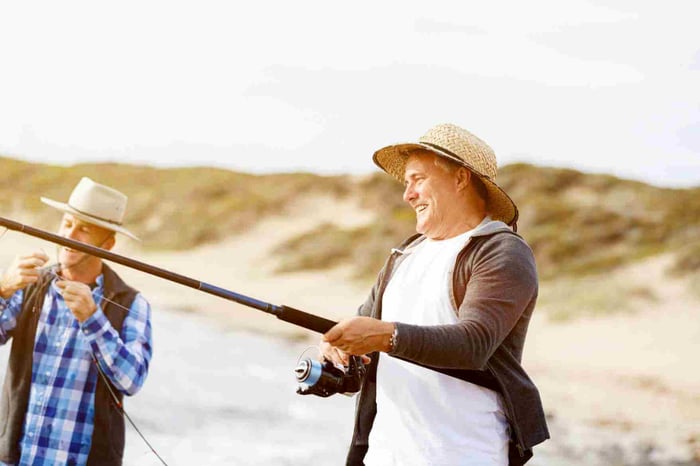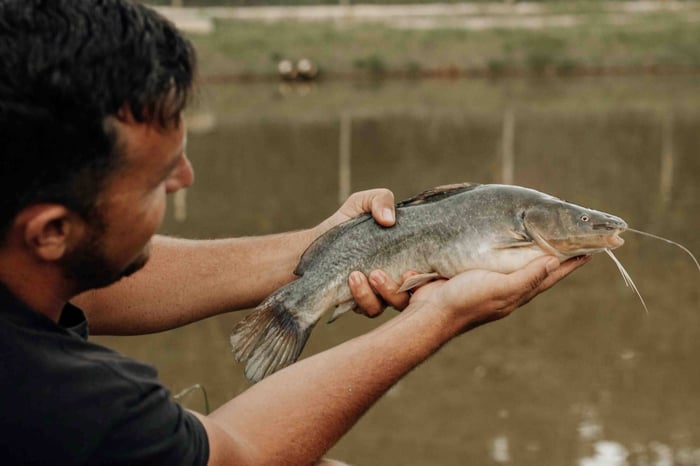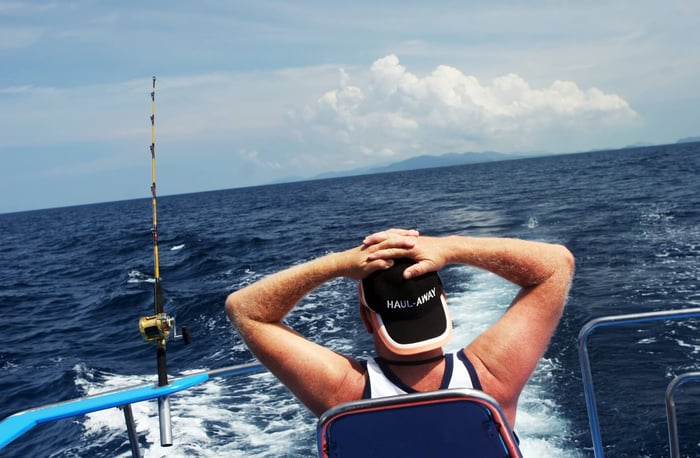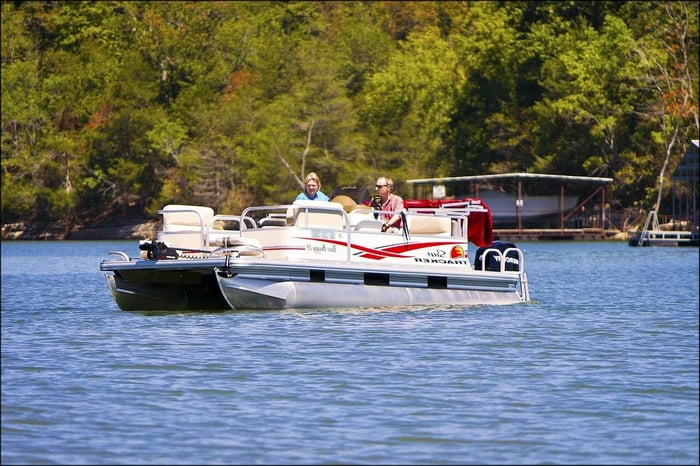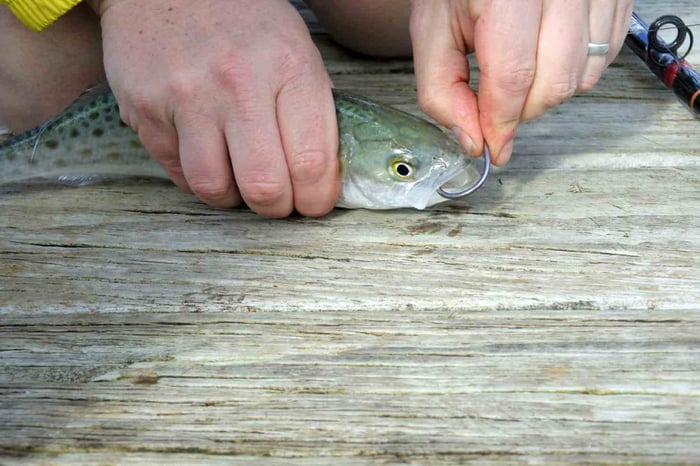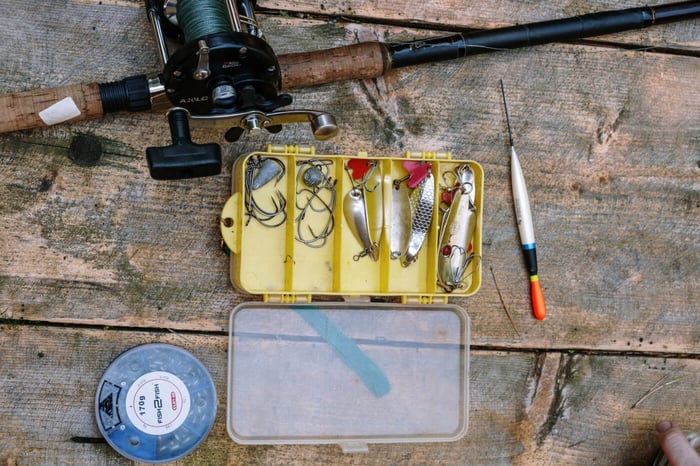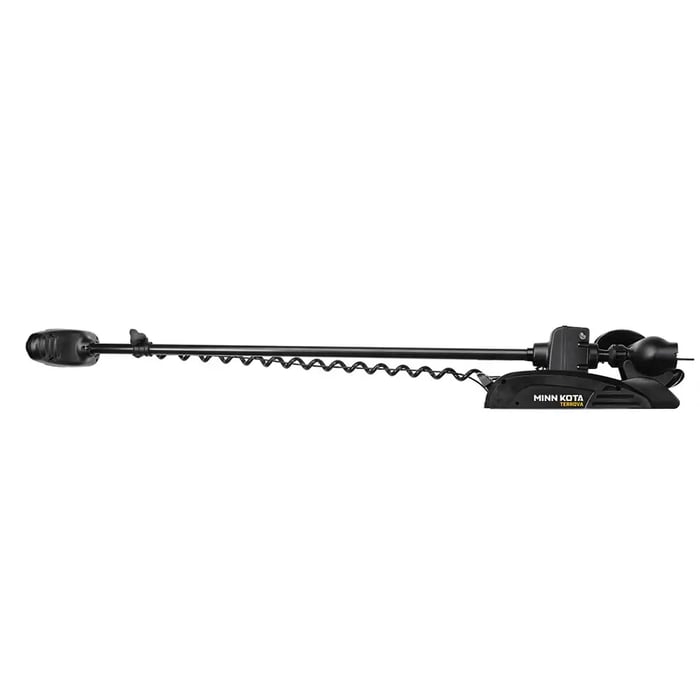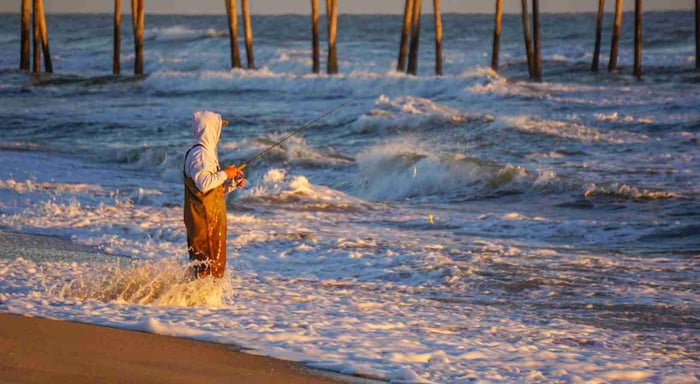Table of Contents
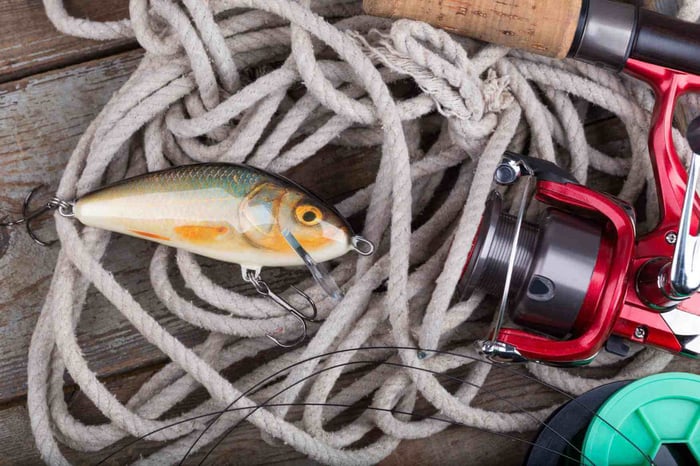 This is a no-brainer. You need a rig that will place your bait in the strike zone and leave it there.
This is a no-brainer. You need a rig that will place your bait in the strike zone and leave it there.
That's why so many fishermen turn to the fish finder rig.
It's a tried-and-true outfit that has been around for decades. It fishes on beaches, jetties, and piers.
Saltwater anglers are familiar with it as one of the easiest means to present natural bait in current.
It doesn't appear to be anything at first sight. A swivel, a hook, a leader, and a sinker.
But assembled properly, it makes a presentation that fish find impossible to resist.
The weight sits at the bottom even in surf and current. Meanwhile, the bait has freedom of movement.
This makes it come to life, whether you are casting clams for striped bass or chunks of mullet for red drum.
The secret is that balance. The fish bites the bait and does not sense the full pull of the sinker immediately. That extra second often is the difference between a missed strike and a good hook-up.
In this article, you will have a clear understanding of the rig and how to assemble it. You will discover when and where to use it.
You will also observe common mistakes and the subtle adjustments that distinguish newbies from expert surf casters. I mean, that's the goal after all, right?
With this, by the time you finish, you will be able to tie and use the fish finder rig with confidence.
What is a Fish Finder Rig?
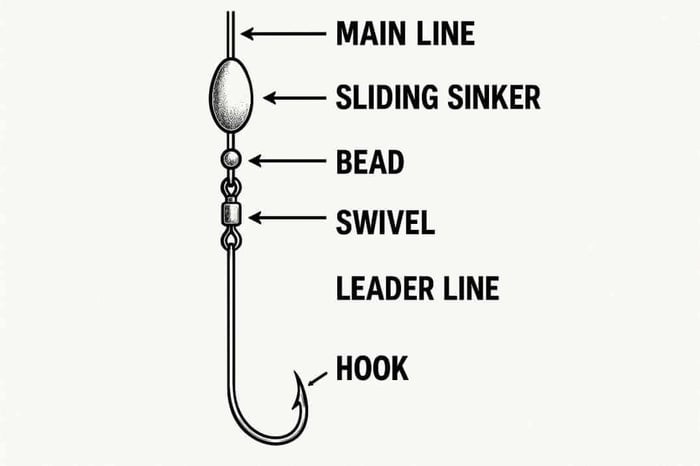
When we talk about a fish finder rig, imagine a setup designed for bottom fishing in current.
It is one of the top surf fishing rigs because it allows your bait to move as the weight remains stationary in the sand.
The fish finder rig is easy but effective.
The mechanism enables a fish to grab a baited hook without experiencing the entire drag of the sinker.
This is the reason why most anglers rely on it whenever they want to entice fish in the surf zone.
Freedom of movement is the principal concept.
The running line runs inside a plastic sleeve that contains the sinker.
This sinker slide allows the fish to swallow the bait and swim for a few feet before the rod tip tips. That pause makes the hook set more naturally, and the fish isn't spooked.
You cast it out, stick your rod in a sand spike, and wait while the bait does its job in the current.
It can deceive striped bass, red drum, black drum, bluefish, and even sharks when magnified with more powerful tackle. It is used by some shore anglers and some boat anglers.
Either one, the concept remains the same.
Surprise, surprise! The rig in question is not a Carolina rig.
A Carolina is well-liked among freshwater bass fishermen and rides higher in the water column.
A drop shot rig is also unique, as it holds bait over a sinker to entice fish at mid-depth.
The high-low rig, or hi-lo, has two hooks positioned above the weight, which contacts more of the bottom but doesn't provide a single bait with the same natural drift.
The fish finder rig is unique due to how effectively designed it is for saltwater surf fishing.
Parts of a Fish Finder Rig
The fish finder rig appears simple, but every component serves a purpose. Once you know the parts, you can more easily tie and set for the target species.
• Sinker slide
The sinker slide, alternatively referred to as a plastic sleeve, is what allows the main line to flow freely. Here, you clip your sinker. Without it, this rig will not function. It ensures the fish grabs the bait without drawing the rod in immediately.
• Pyramid weight
The pyramid sinker is the standard option. It tends to retain sand and keep your bait near the bottom even in currents. In calm water, use a lighter weight. Change to heavier pyramid weights if the surf breaks up harder.
• Bead
A plain bead is placed beneath the slide. It guards the knot that secures the running line to the barrel swivel. This little piece of tackle goes unnoticed, but it eliminates wear that can cost you fish.
• Barrel swivel
The barrel swivel joins the main line to your leader line. It eliminates line twist, maintains the rig's straightness, and provides strength when you apply pressure to a large fish.
• Leader line
The leader line is important in this configuration.
You may use monofilament, but most anglers prefer the use of a fluorocarbon leader for its abrasion resistance and invisibility in clear water.
Length varies with conditions. Short leaders hold bait stationary in heavy surf.
Longer leaders allow bait to drift more naturally in flat water.
• Hook
Hook selection is based on bait and target species. A circle hook is perfect for striped bass, bull drum, or bat rays since it sets cleanly in the mouth corner.
A J hook still enjoys some followers, particularly with squid or sand crabs. Use hook size to match bait, not species.
A small bait, such as sand crabs, might require a small hook, but a piece of bunker or mullet might require a larger one.
How to Tie a Fish Finder Rig
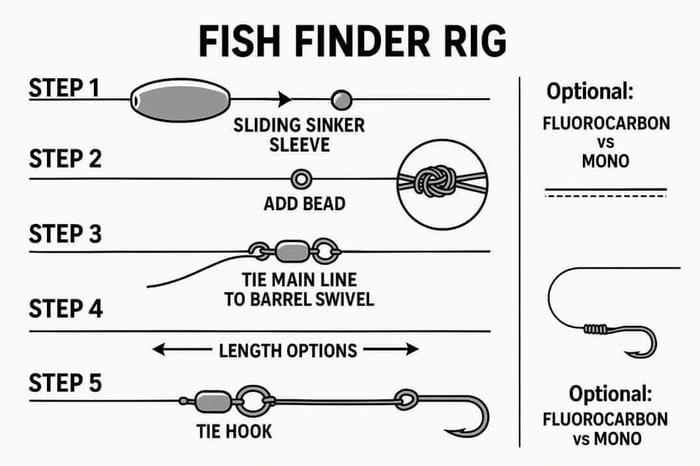
It doesn't take long to tie this rig. With practice, you should be able to tie it quickly on the shore or even when swaying in a boat.
Step 1
Put a sinker sleeve on your main line. This will be where the pyramid weight sits. The sleeve should be free to slide for the rig to function.
Step 2
Position a bead directly beneath the sleeve. This keeps the plastic away from your knot.
Step 3
Tie the business end to one end of a barrel swivel. A better clinch or uni knot will do. Pull tight and check before casting.
Step 4
Cut a leader line. Two feet is a good place to begin. Shorten it for rough surf. Lengthen it for more natural drift. Tie one end of the leader onto the swivel.
Step 5
Tie your hook to the other end of the leader. A snell knot positions the hook in a straight position, which is useful when you want a clean presentation. A uni knot is honestly okay as well.
Opt for a circle hook if releasing fish such as striped bass or black drum is on your agenda. J hooks are good for anglers who prefer to set hard.
Optional.ᐟ
Consider the material.
A fluorocarbon leader is more durable when fishing around crabs, rocks, or shell beds.
Mono is simpler to tie and less expensive to replace. Both are used constantly, and both catch fish.
When the rig is prepared, connect your pyramid sinker to the clip, hook squid, sand crabs, or cut fish, and make a strong cast into the surf zone.
Set the rod in a sand spike and hold tight.
Also, observe the rod tip.
As soon as it shakes or dips, you know a fish took.
When and Where to Use a Fish Finder Rig
✓ Surf fishing
The fish finder rig is also very suitable for saltwater and excels at surf fishing. Numerous anglers employ it when pursuing striped bass, red drum, and bluefish.
Cast it into the surf zone with a firm cast, stick the rod in a sand spike, and observe the rod tip. When a fish bites, the slide allows the line to slide freely so the bite feels normal.
✓ Jetties and Piers
It also operates from jetties and piers.
The pyramid weight places bait near the bottom, even in tidal currents.
This is why the rig is so popular in areas with strong currents.
Off the beach, it keeps your bait in place rather than rolling around in sand with each wave break.
✓ Open Beaches
Open beaches with constant current are another high point.
A baited hook with clam, squid, or sand crabs floats just far enough to entice fish.
Sharks, bull drum, and bat rays fall victim to this same rig when bumped up with heavier gear.
Tie it with a fluorocarbon leader and a circle hook, and you are good to go for big fish that pass near the bottom.
✓ Flowing water, generally
The finder rig is not built for still water like a drop shot rig would.
It is designed for use with flowing water, where presentation is crucial.
That is why it is favored by most anglers as part of the best surf fishing rigs.
Cast it, allow the bait to settle, and wait.
Actually, the rod tip will inform you when a fish is on. So, stay tuned!
Target Species
This rig will catch a lot of saltwater species.
The secret is to keep the hook and bait size consistent with what you are after.
Obviously, small bait requires a small hook.
Bigger pieces of crab require more metal to keep.
I've made this table to simplify everything for you. Check it out, and I hope it helps!
Target Species | Common Baits | Hook Type / Size |
Striped bass | Bunker chunks, clams | Circle hook 5/0–7/0 |
Red drum/bull drum | Cut mullet, crabs | Circle hook 6/0–8/0 |
Black drum | Clams, crabs | J hook or circle 5/0–6/0 |
Bluefish | Mackerel, oily baitfish | J hook 4/0–6/0 |
Sharks | Cut bait, whole fish | Circle hook 8/0–10/0 |
Bat rays | Squid, cut fish | Circle hook 7/0–9/0 |
Halibut | Squid, anchovies | Circle hook 3/0–4/0 |
Barred surfperch | Sand crabs, worms | Small circle or J #4–#2 |
Cut shad, worms | J hook 2/0–4/0 |
Most anglers vary the leader length to alter how the bait is moving within the water column.
A short leader holds bait up near the sand.
A longer one floats farther and can pick up fish that are feeding higher.
Two hooks with a dropper loop can be used, but the old finder rig will work best with a single baited hook.
Why Get A Fish Finder Rig, Though?
The fish finder rig becomes one of the top surf fishing rigs due to how naturally it exposes bait.
Just so natural
A fish grabs without experiencing the complete tug of the weight immediately.
This tends to result in deeper, cleaner hook sets.
Long casts
It also allows long casts.
The pyramid weight sinks into the sand and allows the bait to drift slowly down the current.
This enables you to cover water and get to the surf zone where striped bass, red drum, and bluefish tend to feed.
So easy to use
When your rod rests in a sand spike, you can wait with assurance that your bait is producing.
Another advantage is the simplicity of the rig. Only a sinker slide, a bead, a barrel swivel, a leader line, and a hook. Most anglers rig it instantly on the shore or even on a boat.
You can change hook size, leader length, or bait without altering the rest of the rig.
Versatility is king
Versatility is the final benefit. It accommodates species as small as barred surfperch or as big as bat rays and sharks. It deals with clams, sand crabs, squid, or cut bait equally.
With proper tackle, this rig can be used in nearly any type of saltwater situation.
That is why fishermen keep coming back to it year after year.
Avoid These Mistakes
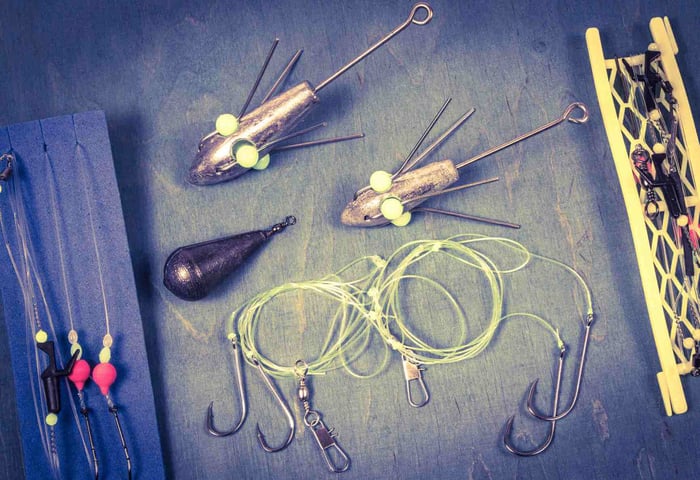
The fish finder rig is popular among many anglers, but small mistakes can destroy the rig.
× One of the most typical mistakes is making the leader line too short or too long.
A very short leader confines the bait near the sinker and restricts movement. A very long leader will tangle with the main line on the cast. Use a length comparable to the surf zone and target species.
× Another mistake is taking the wrong kind of sinker.
An egg sinker may be suitable for still water, but at the shore area with waves and current, a pyramid weight anchors better. The flat sides bury in sand and hold the baited hook firm.
× Some new anglers also use way too heavy gear.
A big rod, heavy running line, and clunky equipment might appear strong, but they will kill sensitivity at the tip of the rod.
You need to sense when a fish bites, even if it's just a tap from barred surfperch or a nibble from sand crabs.
× Rocky structures introduce yet another issue: abrasion.
If you neglect to employ a fluorocarbon leader or a more durable mono, the line will break when pulling through structure. Always inspect for fray and replace the section before casting again.
More Tips From Others
The fish finder rig is adaptable, and most fishermen have their own variations.
One popular adjustment is the length of the leader.
In calm surf, a short leader line positions the bait near. In a strong current, an extended leader allows the bait to drift more and catch fish throughout the water column.
Some anglers add little floats above the hook.
This holds the bait away from the sand where rays and crabs might swipe it. A float also gets the attention of striped bass or red drum making their way through the surf zone.
For toothy species such as bluefish or sharks, a heavier fluorocarbon leader or even a wire is better.
It avoids cut-offs when the fish bites. Another trick that is helpful is to replace a pyramid weight with a sputnik sinker in crashing surf. The arms are buried deep in the sand and prevent the rig from rolling.
True stories also demonstrate the versatility of this specific rig.
Is Fishing Rig The Best Out There?
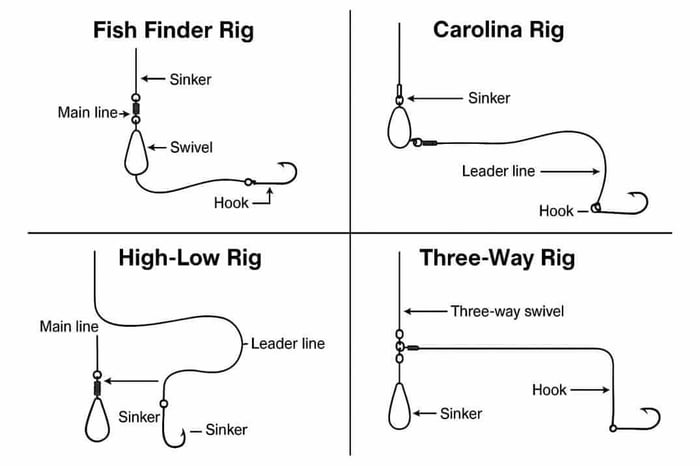
The fish finder rig excels at surf fishing, though there is more to choose from.
Lots of anglers compare it with the Carolina rig. They both use a sliding sinker, but the Carolina rig is more common in lakes or freshwater environments.
The Carolina rig excels at catching bass and lures, whereas the fish finder rig performs on large bait and saltwater.
The other alternative is the high-low rig. It is a setup that keeps two hooks in dropper loops so that two baits at a time are carried.
It can locate fish at different points of the water column. But the bait isn't moved as naturally as in a finder rig.
And then there is the three-way rig. The three-way rig uses a three-way swivel to keep the sinker on one drop line and the baited hook on another.
It is effective in strong current, but it does not provide the finesse that allows a fish to take the hook without resistance.
Every rig has its time.
If you're looking for natural bait action for striped bass or drum, the fish finder rig can't be beat.
And if you're looking to cover water with several baits, use the high-low.
Finally, if you're looking for strength in deep tide, use the three-way.
Honestly, it really just all depends on where you fish and what you're hoping to catch.
